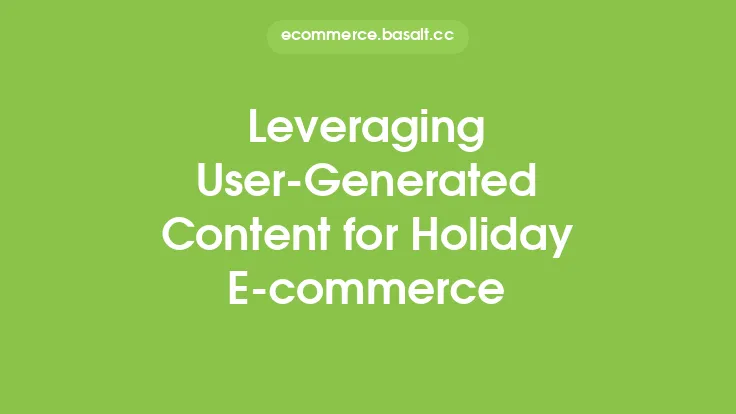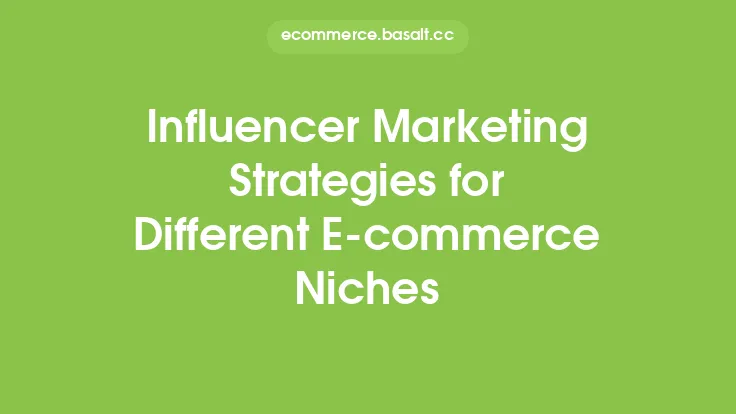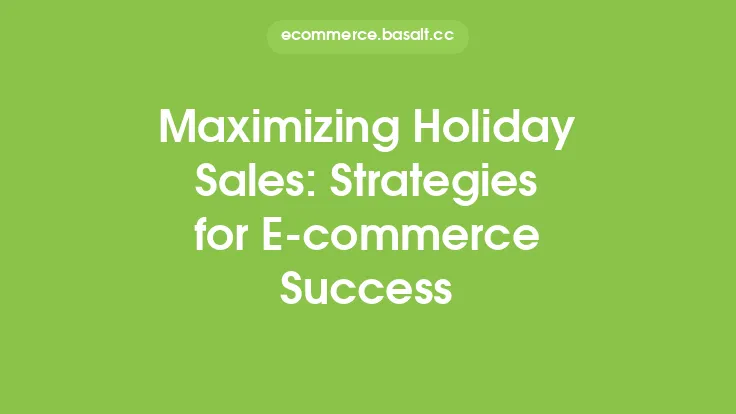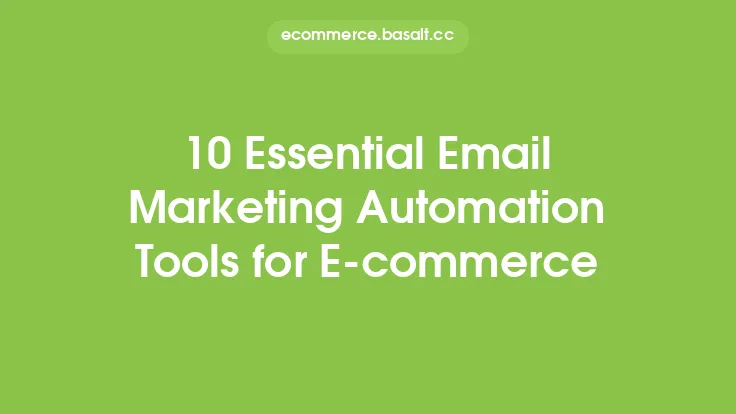As the holiday season approaches, e-commerce businesses are presented with a unique opportunity to boost sales, increase brand awareness, and drive customer engagement. A well-planned holiday marketing campaign can make all the difference in helping businesses achieve their goals and stand out in a crowded online marketplace. In this article, we will explore the key elements of a successful e-commerce holiday marketing campaign, including tips and strategies for creating a compelling and effective campaign.
Understanding Your Target Audience
To create a successful holiday marketing campaign, it's essential to have a deep understanding of your target audience. This includes their demographics, preferences, behaviors, and pain points. By understanding your audience, you can tailor your marketing efforts to meet their needs and interests, increasing the likelihood of conversion. Conducting market research, analyzing customer data, and gathering feedback can help you gain valuable insights into your target audience. Additionally, creating buyer personas can help you visualize your ideal customer and develop targeted marketing strategies.
Setting Clear Goals and Objectives
Before launching your holiday marketing campaign, it's crucial to set clear goals and objectives. What do you want to achieve with your campaign? Are you looking to drive sales, increase website traffic, or boost social media engagement? By setting specific, measurable, achievable, relevant, and time-bound (SMART) goals, you can create a focused and effective campaign. Consider using metrics such as conversion rates, click-through rates, and return on investment (ROI) to measure the success of your campaign.
Developing a Compelling Content Strategy
Content is a critical component of any successful holiday marketing campaign. Your content should be engaging, informative, and relevant to your target audience. Consider creating a content calendar that outlines the types of content you will create, the channels you will use to distribute it, and the frequency of publication. This can include blog posts, social media posts, email newsletters, and product descriptions. Use attention-grabbing headlines, high-quality images, and compelling calls-to-action to drive engagement and conversion.
Leveraging Social Media and Email Marketing
Social media and email marketing are two of the most effective channels for reaching your target audience during the holiday season. Use social media platforms to create engaging content, run targeted ads, and interact with your customers. Consider using Instagram and Facebook to showcase your products, share behind-the-scenes content, and offer exclusive promotions. Email marketing can also be a powerful tool for driving sales and engagement. Create targeted email campaigns that offer personalized promotions, exclusive discounts, and early access to new products.
Optimizing Your Website for Holiday Traffic
As the holiday season approaches, your website will likely experience an increase in traffic. To ensure that your website can handle the influx of visitors, it's essential to optimize it for performance. This includes ensuring that your website is mobile-friendly, has fast loading speeds, and is secure. Consider using website analytics tools to monitor your website's performance and identify areas for improvement. Additionally, make sure that your website is easy to navigate, with clear and concise product information, high-quality product images, and a seamless checkout process.
Creating Effective Promotions and Discounts
Promotions and discounts are a key component of any successful holiday marketing campaign. Consider offering limited-time discounts, free shipping, and bundle deals to incentivize customers to make a purchase. Use scarcity tactics, such as limited-time offers and exclusive deals, to create a sense of urgency and drive sales. Additionally, consider offering loyalty rewards and exclusive discounts to your loyal customers to show appreciation for their business.
Measuring and Optimizing Your Campaign
Finally, it's essential to measure and optimize your holiday marketing campaign to ensure its success. Use analytics tools to track your website traffic, social media engagement, and email open rates. Monitor your conversion rates, click-through rates, and ROI to identify areas for improvement. Use A/B testing to test different subject lines, calls-to-action, and promotional offers to determine which ones are most effective. By continuously monitoring and optimizing your campaign, you can make data-driven decisions to improve its performance and drive better results.
Conclusion
A successful e-commerce holiday marketing campaign requires careful planning, execution, and optimization. By understanding your target audience, setting clear goals and objectives, developing a compelling content strategy, leveraging social media and email marketing, optimizing your website for holiday traffic, creating effective promotions and discounts, and measuring and optimizing your campaign, you can drive sales, increase brand awareness, and achieve your business goals. Remember to stay focused on your target audience, be creative and innovative in your marketing efforts, and continuously monitor and optimize your campaign to ensure its success. With the right strategy and execution, you can make the most of the holiday season and set your business up for success in the new year.





